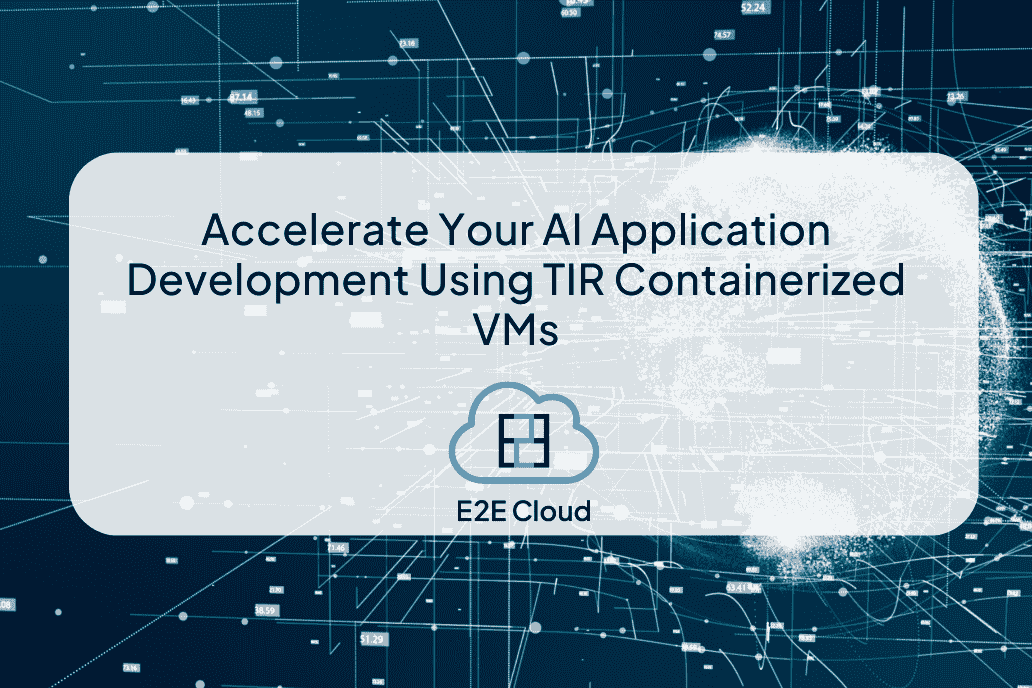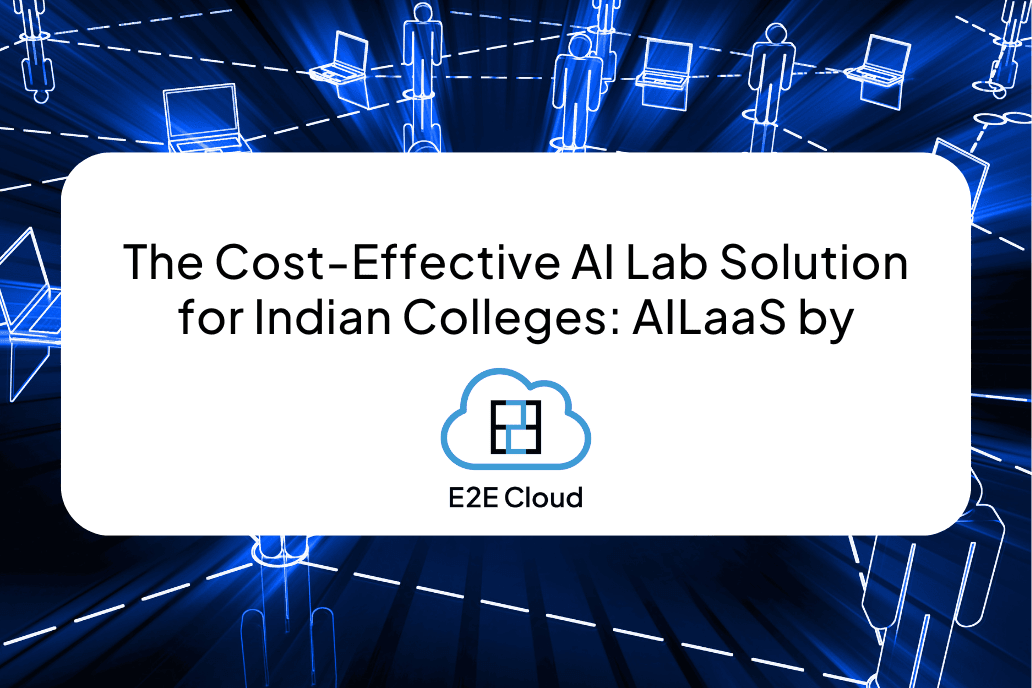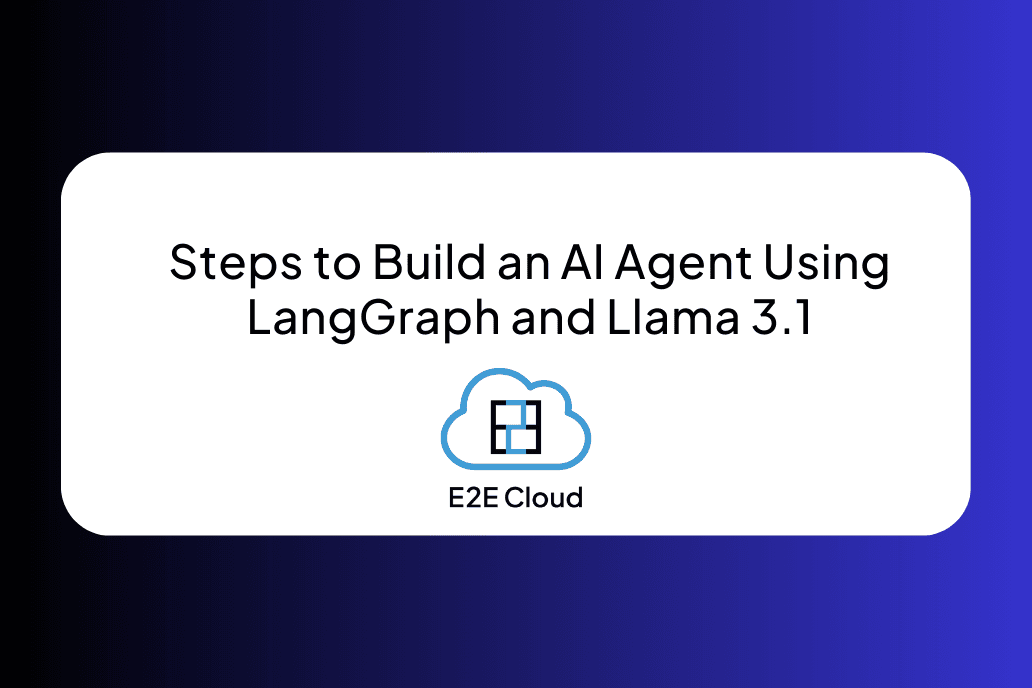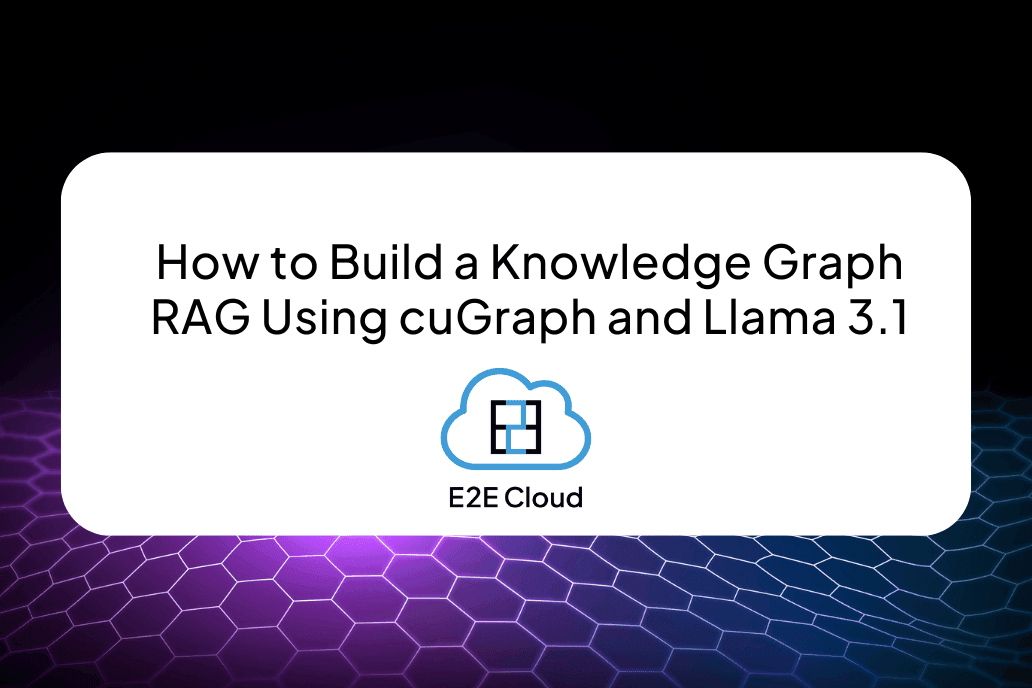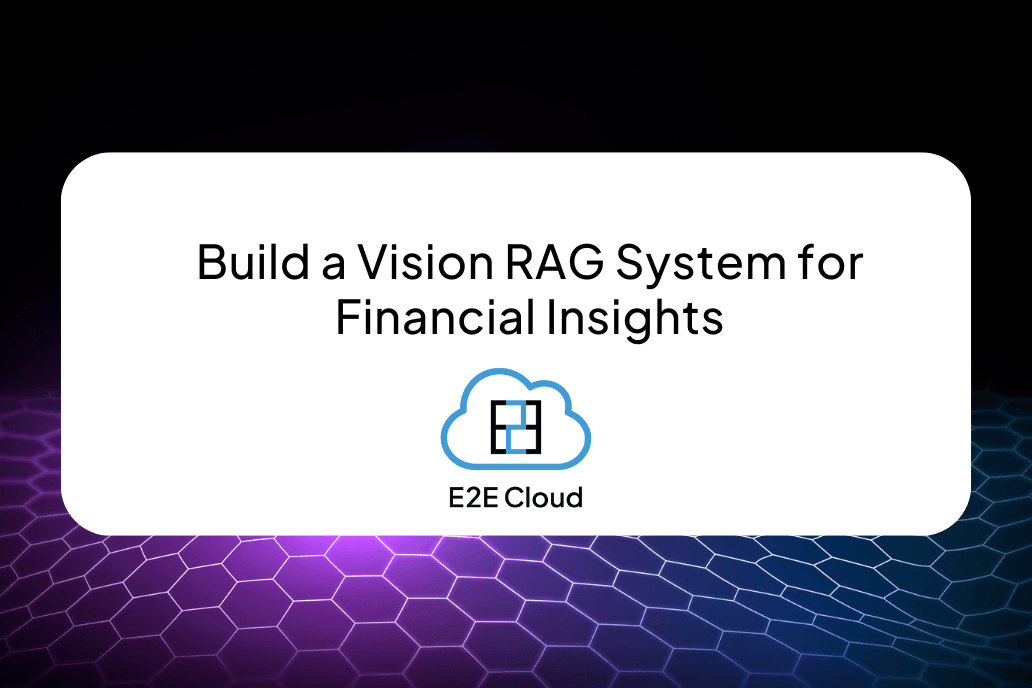With a career defined by exceptional leadership and a profound grasp of technology, Srishti Baweja has been the driving force behind E2E Networks’ ascendancy in the cloud infrastructure landscape of India. Baweja shares how E2E Networks maintains its edge amidst the ever-evolving cloud landscape. Our proactive approach to understanding customer demands and tracking emerging trends allows us to consistently deliver cutting-edge solutions.
You can read the interview with Sugermint here.
In a world where cloud computing providers abound, E2E Networks’ unique value propositions stand out, backed by an exceptional 100% ‘human’ support team, battle-tested open-source technologies, and unwavering commitment to Indian businesses’ growth. Today we will discuss the insights, innovation, and inspiration in the field of cloud computing as we explore Srishti Baweja’s transformative leadership and E2E Networks’ remarkable journey as a homegrown Swadeshi AI-First Hyperscaler.
Catalyzing Transformation with Cutting-Edge Solutions
At the forefront of India’s cloud computing sector stands E2E Networks, a true testament to innovation’s power in the digital age. Srishti Baweja, the COO and Whole-Time Director of E2E Networks, has been instrumental in propelling the company’s rapid growth in this fiercely competitive industry.
'Our approach encompasses several key elements: firstly, providing state-of-the-art cloud solutions and highly performant infrastructure tailored for the Indian market; secondly, delivering exceptional value through optimal price-performance offerings; thirdly, building a robust platform grounded in battle-tested open source technologies, enabling seamless scaling for numerous enterprises.' - Srishti Baweja
With an unwavering commitment to adhering to Indian IT laws, E2E Networks ensures both innovation and security are at the forefront of our solutions. E2E Networks’ impact is exemplified by our pioneering move to introduce cloud advanced GPUs to the Indian market. As Baweja highlights,
'E2E Networks was one of the first cloud platforms to offer cloud advanced GPUs to the Indian market. This has enabled Indian startups and enterprises to harness the potential of generative AI and machine learning.'
This strategic leap has empowered Indian enterprises to harness the full potential of high-performance GPUs, propelling their AI and ML initiatives forward and securing a distinct competitive advantage in the AI-centric environment. E2E Networks transcends the role of a conventional cloud service provider, emerging as a dynamic force driving growth. By enabling Indian entities to adeptly maneuver through the ever-evolving technological landscape, E2E Networks catalyzes progress.
Under Baweja's visionary guidance, E2E Networks stands poised not just to adapt to change but to spearhead it in the digital era, where the boundaries of progress are limitless.
E2E Networks’ Strategy to Lead in Cloud Innovation
E2E Networks has deftly carved a path of innovation, consistently outpacing the competition and delivering cutting-edge solutions to its clients. Srishti Baweja sheds light on the company’s winning approach and its ability to remain at the forefront of technological advancements.
'We take a proactive stance in understanding our customer demand for specific technologies, and also regularly tracking emerging technologies that our customers may want to leverage. As a result, we introduce these technologies as streamlined cloud solutions, simplifying the process for our customers. This customer-centric approach keeps us ahead of the competition and helps us launch cutting-edge solutions in the Indian market,' shares Baweja.
E2E Networks’ approach is reflected in the introduction of streamlined cloud solutions that cater precisely to customer demands. Our commitment to innovation is tangibly demonstrated with the recent launch of ‘Tir,’ a revolutionary Data Science and Machine Learning platform hosted on our cloud. This platform streamlines the journey for data scientists, optimizing the process of building and deploying machine learning models.
Creating an AI-Powered Future
E2E Networks is an AI-First Hyperscaler listed on the NSE, a trailblazer offering instant access to scalable AI/ML and Cloud services. The company simplifies technology for startups, developers, enterprises, and research bodies alike.
'Our goal is to simplify the deployment, usage, and scaling of machine learning platforms, data science workflows, and various cloud applications', states Baweja.
Since 2009, E2E Networks has championed startups, propelling several towards unicorn status. An IPO oversubscribed up to 70 times in 2018, post an initial seed funding led by Blume Ventures, cemented our position as a growth catalyst.
As E2E Networks transitions to NSE Mainboard in 2022, our commitment to innovation remains unwavering. With a focus on Generative AI and machine learning, we are set to revolutionize data utilization for businesses, enabling a future of unprecedented growth.
Distinctive Factors Shaping E2E Networks’ Identity
At E2E Networks, we stand out amidst the cloud computing landscape due to a compelling array of unique features that position us as a driving force in the industry.
Optimal Value Propositions
- We offer the best price-performance ratio within the Indian market, ensuring exceptional value for our clients.
- Our platform relies on a battle-tested open-source foundation, trusted by our clients for seamless production operations.
Predictable Pricing and High Performance
- With 100% predictable pricing and prepaid billing, our clients experience transparency and financial ease.
- E2E Networks is home to cutting-edge GPUs and compute resources, empowering businesses with remarkable performance capabilities.
Empowering Developers and Enterprises
- Our ecosystem encompasses a wide spectrum of cloud technologies necessary for reliable application development, including GPU and CPU resources, DBaaS, Object Storage, CDN, Block Storage, Containers, and more.
Human-Centric Support and Expertise
- Exceptional 100% ‘human’ support teams guide businesses in constructing production platforms.
- With an extensive history of enabling unicorn-scale growth on our infrastructure, we offer unmatched expertise.
Transparency, Stability, and Data Sovereignty
- Our NSE Listing symbolizes transparency and stability, reinforcing our commitment to clients’ interests.
- Embracing a fully Swadeshi cloud approach, we ensure businesses enjoy peace of mind concerning data sovereignty.
Data Security and Privacy
- Prioritizing data security, we implement stringent measures to safeguard our clients’ sensitive information.
- Through LinkedIn Live Events, regular newsletters, and targeted content, we communicate our differentiators effectively.
At E2E Networks, we go beyond offering cloud solutions; we provide an unparalleled ecosystem that empowers clients to navigate the ever-evolving technology landscape with confidence.
Elevating Security in Cloud Computing
Security takes centerstage at E2E Networks to surpass industry standards and set new benchmarks for safeguarding data. As Srishti Baweja emphasizes:
'We prioritize the utmost safety, security, and privacy of data, and this has been demonstrated by our security certifications such as PCI-DSS and ISO 27001.'
E2E Networks’ security approach operates on multiple fronts, ensuring a fortified shield around our clients’ infrastructure. Enhanced security measures include robust security groups, ingress controllers, and a strategic partnership with Bitninja, providing clients with vital anti-malware and customizable Web Application Firewall (WAF) support.
Our platform actively encourages the use of encryption, enabling clients to secure their data seamlessly through SSL for transmission. This empowers businesses to conduct operations without compromising the confidentiality of sensitive information.
As a homegrown Swadeshi AI-First Hyperscaler, E2E Networks adheres strictly to the regulations stipulated by the Indian IT Act. This commitment to compliance ensures that data remains shielded from the risks of foreign entity access, sharing, interception, or seizure, granting businesses the peace of mind and data sovereignty they deserve.
Guiding Principles for Emerging Entrepreneurs
For those embarking on the journey of entrepreneurship, Srishti Baweja, an exemplary leader, shares her insights on achieving success in the dynamic business landscape.
Focus and Direction Matter Most
In the whirlwind of possibilities, it’s crucial to maintain focus on a select few things rather than attempting to conquer all at once. Baweja emphasizes the power of a focused approach, allowing entrepreneurs to channel their energy effectively.
Patience and Persistence: The Pillars of Triumph
Success rarely happens overnight. Patience and persistence, as Baweja affirms, are integral to the journey. Embracing setbacks and challenges with unwavering determination paves the way for long-term success.
Innovation and Timeliness Propel Growth
Staying innovative is a cornerstone of success. Baweja’s advice is to innovate and deliver within stipulated timelines, ensuring that entrepreneurs not only stay relevant but also consistently exceed expectations.
Customer Engagement: A Non-Negotiable Factor
Engaging with customers is a key differentiator. Baweja stresses the importance of building strong customer relationships, understanding their needs, and tailoring offerings to exceed expectations.
Your Successful Cloud Journey Starts Here
Explore a world of possibilities within our diverse cloud ecosystem. From cutting-edge GPUs and compute resources to DBaaS, Object Storage, CDN, Containers, and more, we provide the tools you need for innovation. Experience exceptional value, top-tier support, data sovereignty, and AI-first approach.
Reach out to us or schedule a free trial to see us in action.

